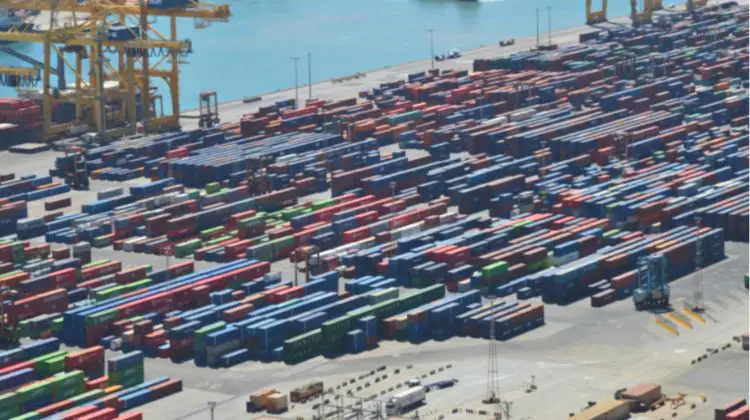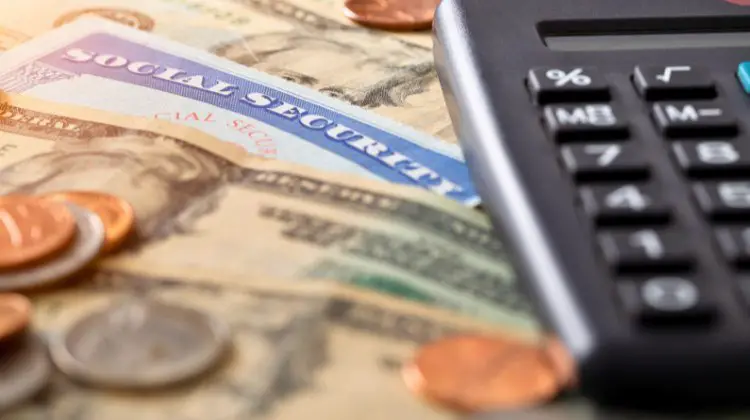It feels like every time you check the news, there is something new to worry about, especially with your money. Lately, a lot of folks are talking about tariff price increases and wondering what it all means for their family budget. You work hard for your money, so seeing prices go up because of things like new tariffs, leading to a price hike, can be really frustrating and create fresh uncertainty.
We get it. This is why understanding these tariff price increases is so important; it helps you see what is happening and how you might prepare for potential price hikes. This understanding also allows you to interpret shifts in economic policy that can affect your daily life.
Table Of Contents:
- So, What Are Tariffs, Really?
- The Straight Line: Tariffs to Higher Prices
- Feeling It: Tariff Price Increases and Your Household
- Who Makes These Tariff Calls, and What Is the Thinking?
- The Big Picture: Tariffs and the Broader Economy
- What Can You Sensibly Do About Tariff Driven Cost Hikes?
- Looking Ahead: The Future of Trade and How It Impacts Tariff Price Increases
- Conclusion
So, What Are Tariffs, Really?
You have probably heard the word tariffs thrown around, but what are they, simply put? Think of a tariff as a type of tax, often referred to as an import duty. It is a tax that a country puts on goods that are imported from another country, which can sometimes be an additional import duty on top of other taxes.
So, if a company in the U.S. wants to buy products from overseas, they might have to pay an extra fee, the tariff, to bring them in. Tariffs can be specific, a fixed sum per unit of a good, or ad valorem, a percentage of the good’s value. This distinction influences how the final price hike is calculated.
Why do governments use tariffs? There are a few main reasons. Sometimes, it is to protect businesses and jobs within their own country by making imported goods more expensive, thus making locally made products seem like a better deal. Other times, tariffs are a way for the government to make money or to address trade imbalances with trading partners. They can also be used as a tool in political discussions between countries, for instance, through the threat or implementation of a reciprocal tariff, according to the World Trade Organization.
Tariffs are not a new idea; countries have used them for centuries for various economic and political aims, shaping international economic policy. It is just that recently, they have been in the spotlight more, especially with discussions around potential reciprocal tariffs, causing a stir about how they affect everyday prices and can raise cost for consumers. The debate over higher tariffs continues to be a prominent feature of economic discussions.
The Straight Line: Tariffs to Higher Prices
How do these government-level tariffs actually make things more expensive for you, leading to price increases? It is a bit like a ripple effect through the supply chain. When a company imports goods and has to pay a tariff, that is an extra cost for their business. Businesses usually try to maintain their profit levels, so they often pass that extra cost along.
This means the importer might charge wholesalers more. The wholesalers then charge retailers more. And finally, the retailers often adjust the price you see on the shelf, effectively raising prices for the end consumer. This is how a tax paid at the border can eventually mean you pay more for your shopping. For example, information from the Congressional Budget Office shows tariffs raise prices for consumers and can lead to a general price hike across various sectors.
It is not just the direct cost of the tariff itself. Tariffs can also cause companies to look for new suppliers or change how they get their products, disrupting established supply chain networks. These shifts can add more costs, delays, and uncertainty, all of which can contribute to higher prices for items you buy regularly, sometimes resulting in a steeper price for consumers. Businesses might also proactively raise prices in anticipation of future tariff hikes.
Feeling It: Tariff Price Increases and Your Household
You might notice these price changes in various parts of your life, impacting the middle class significantly. Think about your grocery bill. If tariffs affect imported foods or ingredients used to make food, your weekly shop could cost more. Many fruits, vegetables, and even packaged goods travel across borders, and tariffs on these can quickly lead to a noticeable tariff hike at the checkout.
Electronics are another common area affected by price increases. Many parts for phones, computers, and TVs come from other countries. Tariffs on these components can lead to more expensive gadgets. Even home improvement projects can feel the pinch. Materials like lumber, imported steel, or tiles might see price jumps if they are subject to import duties, especially if metal tariffs like aluminum tariffs are broadly applied. The status of tariffs on imported cars remains a concern for many planning a vehicle purchase, as automobile manufacturers may pass these costs on.
These rising costs can eat into your savings. They might mean you have less to put aside for big goals like retirement or a child’s education. It really shows how global trade policies can have a very personal impact on family finances. Young families, in particular, might feel these pressures as they are often managing tight budgets already and are sensitive to any price hikes.
Who Makes These Tariff Calls, and What Is the Thinking?
Governments are the ones that decide to put tariffs in place. These decisions are usually made by specific government bodies responsible for trade policy. In the United States, for example, the executive branch, often with input or authority from Congress, handles these matters as explained by the U.S. International Trade Commission. Sometimes, a President, like President Trump, may advocate for specific tariff measures.
What are the stated reasons? Governments often say tariffs are needed to protect domestic industries from foreign competition that might be seen as unfair, or to counter actions by trading partners. They might also cite national security, arguing that it is important for the country to be able to produce certain essential goods. Another common argument is that tariffs can be used as leverage to get other countries to change their own trade practices, perhaps aiming for reciprocal tariffs that level the playing field.
Of course, not everyone agrees that tariffs are the best approach to economic policy. There is a lot of debate among economists and policymakers, including many a senior economist. Some argue that tariffs harm consumers and can lead to a less efficient economy overall, potentially raising prices across the board. Others believe they are necessary tools in certain situations, such as when the trump administration raised tariffs on certain goods, citing various economic and security concerns. It is a topic with strong views on all sides, and actions by any administration can have far-reaching effects.
The Big Picture: Tariffs and the Broader Economy
Tariff price increases do not just affect your shopping cart; they have wider economic ripples. For domestic industries, tariffs can be a mixed bag. Some industries might benefit from protection against imports, especially if higher tariffs are placed on competing foreign goods. But others, particularly those that depend on imported parts or materials like imported steel or components affected by aluminum tariffs, could face higher costs and become less competitive globally. The application of broad metal tariffs can create significant adjustments within manufacturing sectors.
One common concern is retaliation from trading partners. When one country puts tariffs on another’s goods, that other country might respond by putting its own reciprocal tariffs on the first country’s products. This can lead to trade disputes where multiple countries are taxing each other’s goods, making it harder and more expensive for businesses everywhere to trade and sometimes leading to a tariff hike cycle. This was a feature of Trump’s tariff strategy and the subsequent global reactions.
There are also worries about inflation if these actions raise cost significantly. If tariffs cause a wide range of goods to become more expensive, this can contribute to overall inflation in the economy, potentially leading to a steeper price hike for consumers. This means your money does not go as far. Economic growth can also be affected if businesses become hesitant to invest due to fresh uncertainty or if global trade slows down. The job market can also see changes, with some sectors gaining and others losing, creating a complex economic picture.
What Can You Sensibly Do About Tariff Driven Cost Hikes?
Hearing about all this might make you feel a bit helpless when faced with rising prices. But there are some practical things you can think about to manage these rising costs from tariff price increases. First, take a good look at your budget. Knowing where your money is going is always a smart first step in handling the impact of price hikes.
When you shop, try to compare prices more actively. Sometimes, switching brands or stores can make a difference. You might also consider if there are locally produced alternatives for some of the things you buy; this isn’t always possible or cheaper, but it is worth looking into. Websites that track consumer prices can be a helpful resource here. Being mindful of where your data goes when using such sites is also wise; always check the privacy policy of any service you use.
For bigger purchases, try to plan ahead. If you know you will need a new appliance or plan a home project, watch prices and look for sales. Sometimes, delaying a purchase, if you can, might allow you to find a better deal later, especially if there’s talk of softened industry tariffs. Thinking about your long term financial plans, like saving for retirement, is also good. Small adjustments now can help you stay on track even if some costs are higher due to a tariff hike or other economic pressures.
News coverage, sometimes involving a dedicated news associate or even a seasoned reporter like Mary Cunningham focusing on the finance vertical, plays a part in disseminating this information. Programs like a news associate program at outlets such as CBS News help train journalists who cover these economic shifts; for instance, a CBS News associate might research the impact of Trump’s tariff hike. Understanding such developments, as told by CBS Moneywatch or other financial news sources (perhaps a CBS News associate program graduate told CBS Moneywatch about consumer impacts), can be beneficial.
Here are a few general ideas for adjusting your spending:
- Review subscriptions: Cut any services you do not use much. This can include streaming platforms or memberships.
- Meal planning: This can reduce food waste and impulsive buys, helping manage grocery bills affected by price increases.
- Energy savings: Lower utility bills free up cash. Look for small changes around the home, like using energy-efficient bulbs.
- DIY: For some small repairs or projects, doing it yourself can save money, especially if materials costs have seen a price hike.
- Compare insurance: Regularly review your home, auto, and health insurance to see if you can find better rates without sacrificing coverage.
- Second-hand first: Consider buying used items like clothing, furniture, or even cars, especially when new imported cars face potential tariffs.
You could also make a table to track potential savings from different strategies. This visual aid can help you prioritize actions that have the most impact on your budget, especially important when every dollar counts due to tariff price increases and their effect on the middle class.
| Area of Spending | Potential Action | Estimated Monthly Saving | Notes on Tariff Impact |
|---|---|---|---|
| Groceries | Buy store brands, reduce food waste, utilize coupons | $30 – $70 | Food items, especially imported ones, can see price increases. |
| Entertainment | Limit paid streaming, find free local activities, library resources | $20 – $50 | Less directly hit by tariffs, but savings here free up cash. |
| Utilities | Adjust thermostat, fix leaks, unplug electronics | $15 – $50 | Indirectly affected if materials for infrastructure face higher tariffs. |
| Transportation | Carpool, use public transport, maintain current vehicle | $25 – $100+ | New car prices can be affected by tariffs on imported cars or parts. |
| Clothing | Shop sales, buy off-season, consider second-hand | $15 – $40 | Many garments are imported and subject to tariffs. |
Looking Ahead: The Future of Trade and How It Impacts Tariff Price Increases
The landscape of international trade is always moving. Discussions about trade deals and tariffs are ongoing between countries and their trading partners. Government policies can change, sometimes quickly, depending on political shifts, domestic pressures, or new economic situations. It is wise to stay generally informed about these developments, perhaps by following reputable financial news sources, like CBS News, that often report on issues such as trump’s tariff policies or proposed reciprocal tariffs. Staying informed about these developments can help you anticipate potential price hikes.
What might we see in the future regarding tariff price increases? Some experts predict that certain tariffs might be reduced as countries work to ease trade tensions or combat inflation, possibly leading to softened industry tariffs. Others believe that a focus on protecting national industries or addressing national security concerns could mean some tariffs remain or new ones appear. Global events, like pandemics or geopolitical conflicts, also play a big role in shaping trade policies and creating fresh uncertainty. These events can disrupt the supply chain and influence decisions about tariffs and import duty structures. The actions of a body like the Trump administration or any subsequent administration can have lasting effects, as administration raised tariffs often set precedents.
For young families and future homeowners, this means keeping an eye on how these bigger trends might affect your plans. For instance, changes in metal tariffs on building materials like imported steel or those from aluminum tariffs could influence housing costs and lead to a steeper price for new constructions or renovations. Similarly, tariffs on agricultural products could impact long term food prices. While you cannot control these global forces, understanding them helps you make more informed financial decisions when faced with potential price increases or a steeper price hike for essential goods. Journalists, including those from a news associate program or reporters like a Mary Cunningham might focus on these impacts in the finance vertical, helping the public understand these changes as reported by outlets such as CBS Moneywatch when they are told CBS Moneywatch insights by economists. The status of tariffs on items like imported cars remains a topic many watch closely.
Conclusion
It is clear that tariff price increases are a significant issue, touching many parts of our financial lives and affecting the broader economic policy. From the grocery store to big home projects, the effects of these import taxes and subsequent price hikes can be noticeable. Understanding what tariffs are, why they are used, and how they result in higher costs for consumers, potentially leading to a tariff hike across many goods, is the first step.
These economic policies, often set for big picture reasons including national security or in response to actions by trading partners through reciprocal tariffs, certainly create ripples that reach our own household budgets and impact the middle class. Actions such as trump’s tariff hike decisions or broader moves like implementing aluminum tariffs have shown how quickly the cost of goods can change. While we cannot directly control global trade talks or national tariff strategies that cause these price increases, we can control how we respond with our own spending and saving habits to manage these tariff price increases and the challenge of rising prices.








Reader Interactions